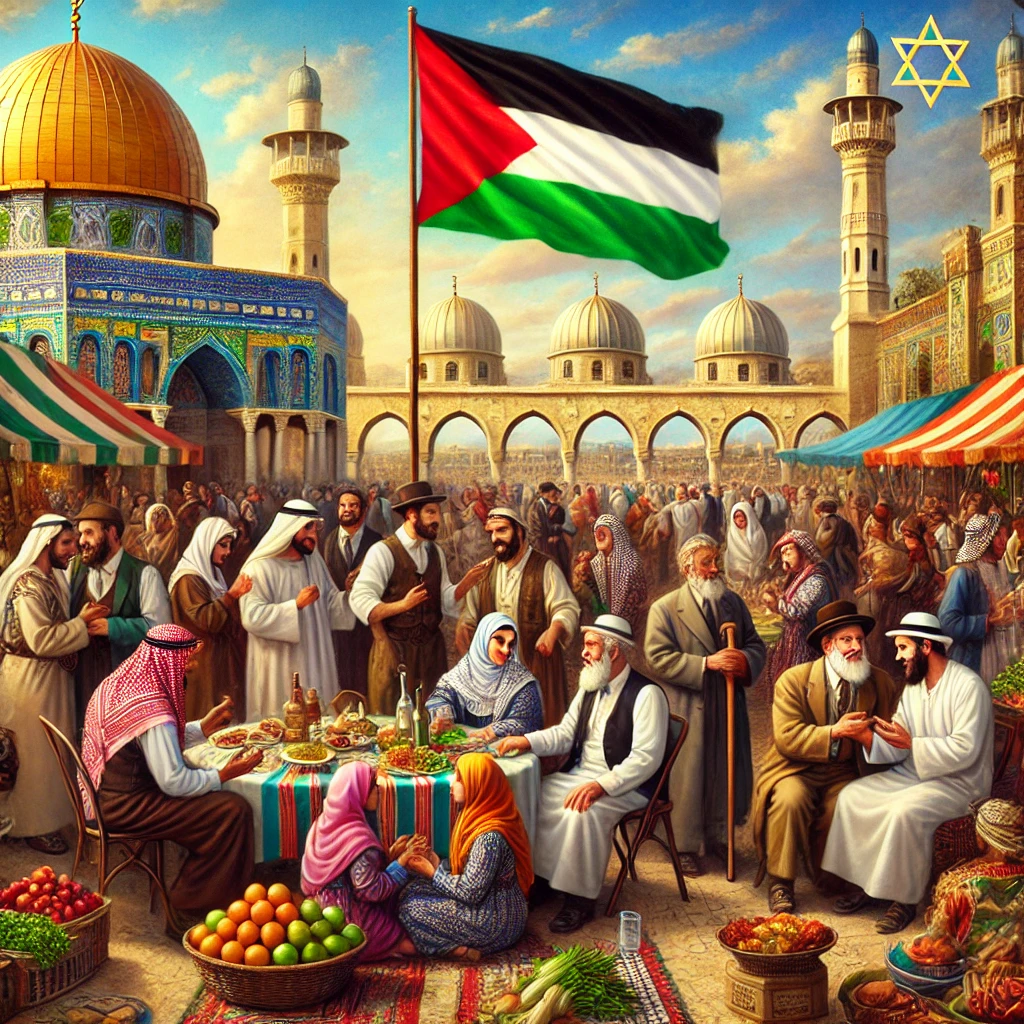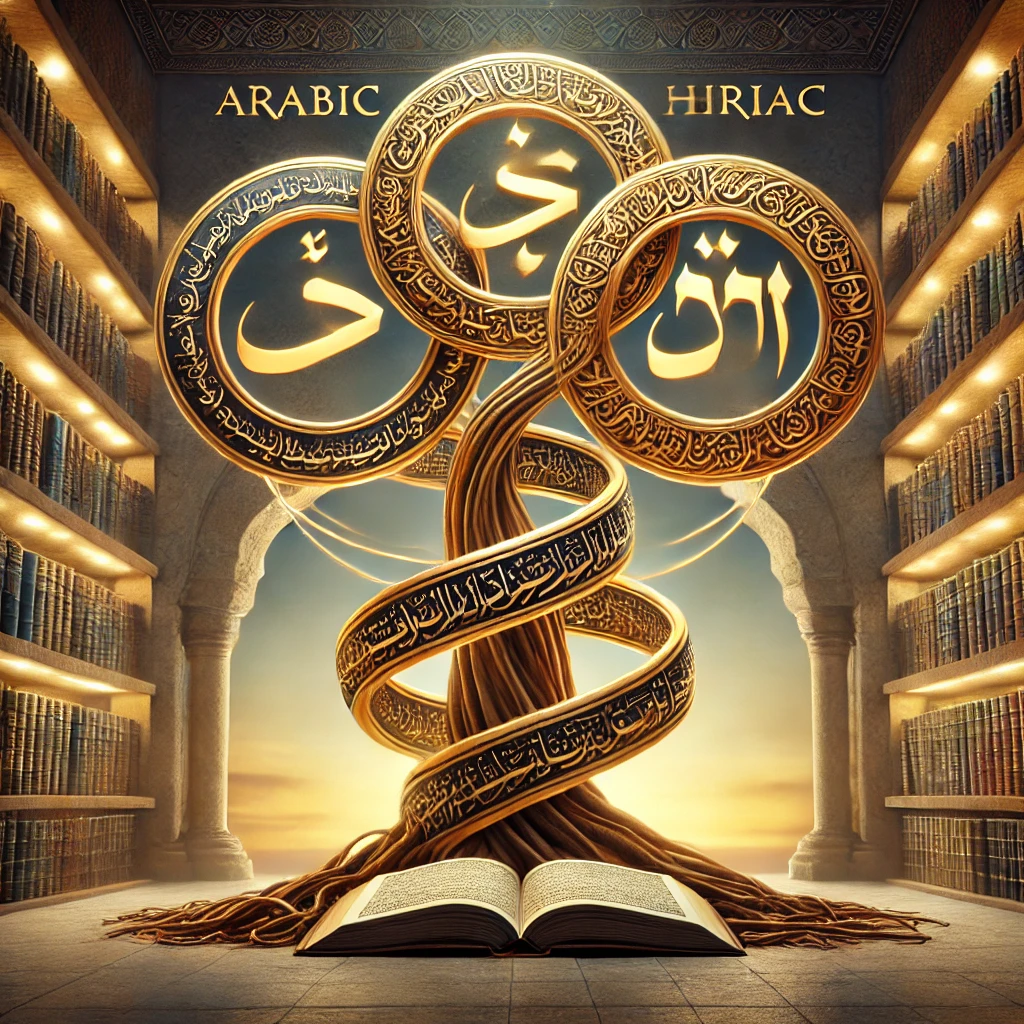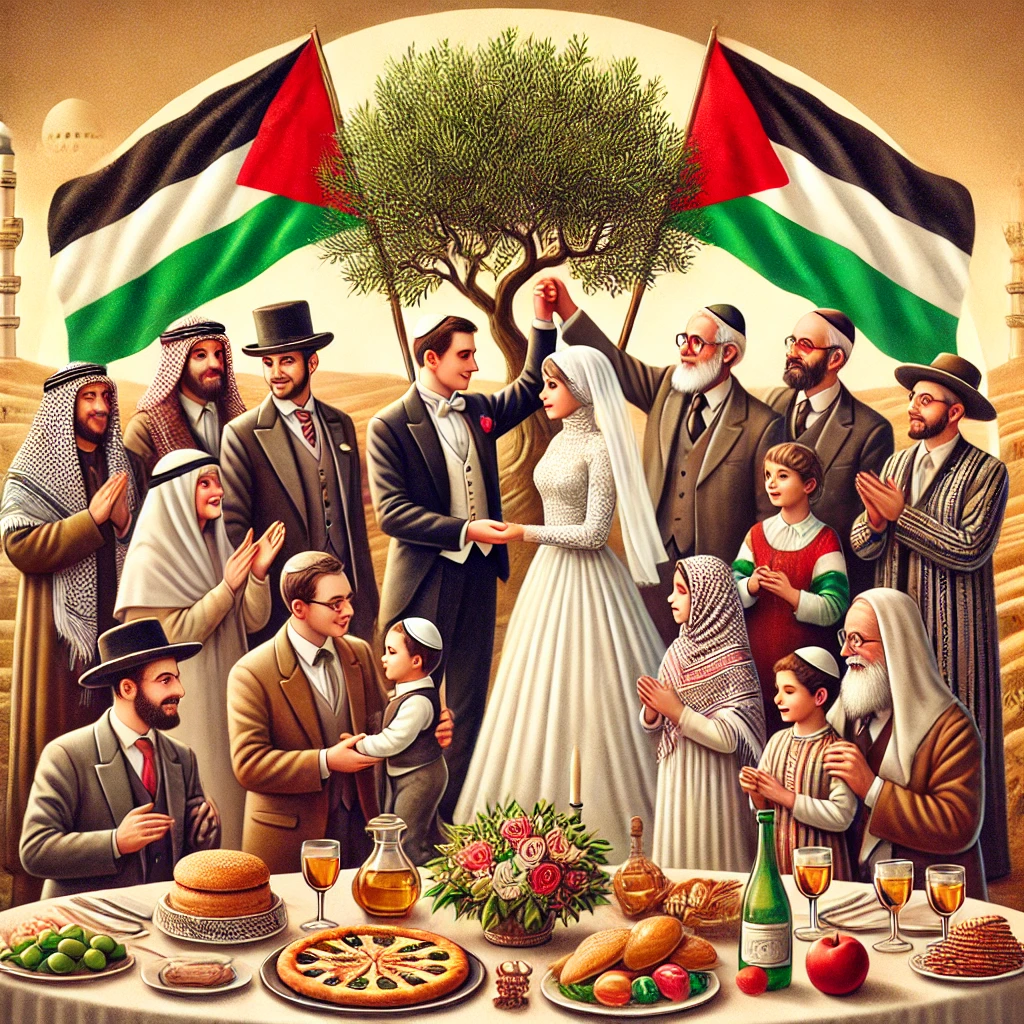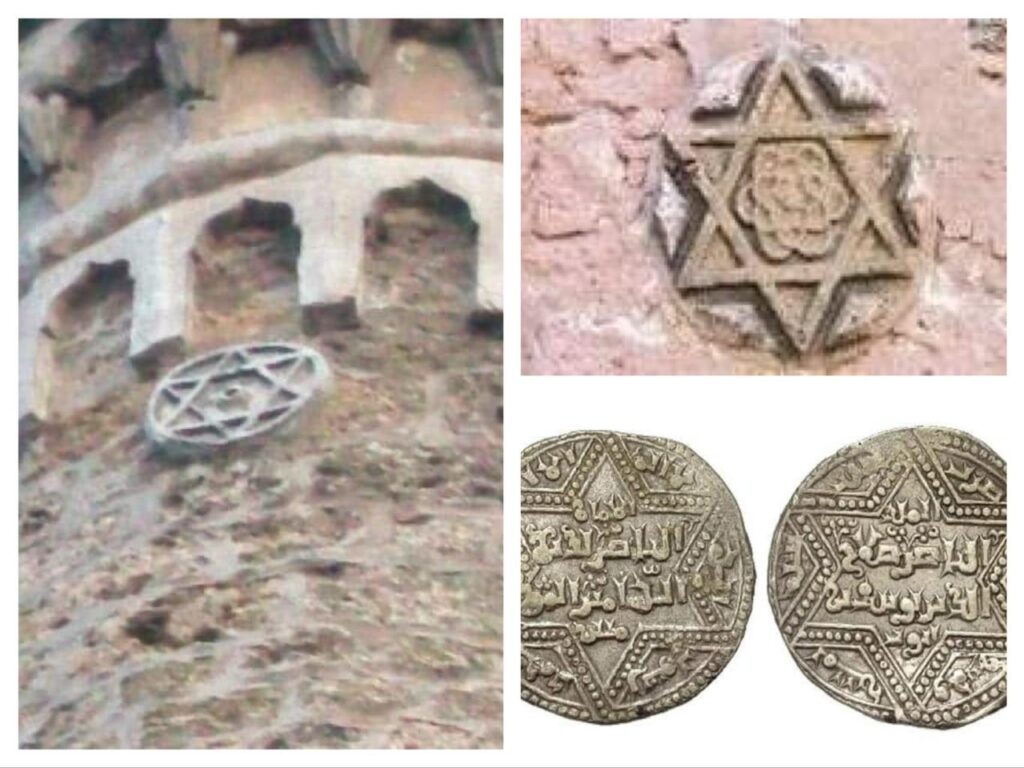Rejecting Division Between The Semitic Siblings
Yara Marei / Arab America Contributing Writer

In a world marked by divisions, the shared history of Arabs and Jews serves as a powerful reminder of our interconnectedness. These Semitic peoples have lived, traded, and celebrated side by side for centuries, united by shared values and traditions. Before the Zionism movement divided the brothers who were fooled in this trap. In this article, we’ll explore their common ancestry, linguistic roots, and cultural practices, offering a lens of unity and understanding. Join Yara Marei, Arab America Contributing Writer, as we delve into this fascinating and enduring connection.
1. Shared Ancestry
Arabs and Jews share a profound historical and genetic connection, tracing their origins to the patriarch Abraham (Ibrahim). According to religious traditions, Arabs are descended from Ishmael (Ismail), while Jews trace their lineage through Isaac (Ishaq), making them part of the same ancestral family tree. This bond reflects their shared roots and intertwined histories, spanning thousands of years.
Throughout history, particularly in regions like the Levant, these two communities lived side by side, exchanging traditions, cultures, and experiences. Despite modern political divisions, their common heritage serves as a poignant reminder of their familial ties and shared beginnings.
2. Both Are Semitic Peoples

Arabs and Jews share deep roots as Semitic peoples, belonging to the same linguistic and ethnic family. Their languages, Arabic, Hebrew, and of course the Syriac language of the Bible, all stem from the Semitic language family and reveal striking similarities. These three languages are written from right to left and share overlapping grammatical structures and vocabulary. For instance, the words for “boy” are yeled in Hebrew and walad in Arabic, while “girl” is bat in Hebrew and bint in Arabic. Even the word for “sun” closely aligns, with shemesh in Hebrew and shams in Arabic. These linguistic connections highlight a rich shared heritage, shaped by centuries of cultural exchange and mutual influence.
3. Cultural Parallels

Arabs and Jews share a strong sense of tradition and cultural conservatism, evident in their shared values surrounding family, modesty, and community. Both groups emphasize the importance of marriage, inheritance, and living in accordance with ethical dietary laws, such as halal for Arabs and kosher for Jews, which reflect their commitment to purity and faith. Modesty in dress is another shared principle, symbolizing respect for cultural and religious values.
One striking similarity is the tradition of Nuqoot, where family and friends offer monetary gifts during significant life events such as weddings, the birth of a child, or graduations. This practice strengthens communal ties, providing financial and emotional support to the celebrants. It reflects the collective solidarity deeply embedded in both Arab and Jewish cultures, where the success and well-being of one member are celebrated and supported by the entire community.
Additionally, there is a shared sense of loyalty within each community, often reflected in how businesses prioritize supporting members of their own group. For instance, an Arab business owner may prioritize hiring fellow Arabs, just as a Jewish business owner might do for Jews. This mutual aid underscores the value both communities place on unity and interconnectedness, revealing a shared cultural fabric that binds them together despite their differences.
5. The Star of David: A Shared Symbol

The Star of David, commonly associated with Jewish identity, also holds historical and spiritual significance in Arab and Islamic cultures. It has been found on artifacts adorned with Arabic inscriptions, symbolizing divine protection and guidance. In Islamic traditions, the star is often linked to prophets like David (Dawud) and Solomon (Suleiman), highlighting a shared spiritual heritage and mutual reverence for faith.
The Star of David’s strong association with Judaism is a relatively modern phenomenon, as noted by Egyptian archaeologist Dr. Abdel Rahim Rayhan. He highlights that the symbol was widely used in Islamic art and architecture centuries before its adoption as a prominent emblem by the Zionist movement.
Historically referred to as the “Stamp of Solomon” in Islamic contexts, the star represented the connection between the spiritual and material worlds. Its use predates its modern association with Judaism, appearing in Islamic art, architecture, and symbolism. For instance, the star can be seen on the entrance to the Saladin Citadel in Sinai, built in the 12th century, as well as on coins and artifacts from the Abbasid and Fatimid eras.
In Islamic culture, the star was a symbol of unity, divine protection, and guidance. It was prominently featured on Ottoman naval flags, mosque decorations, and other artistic works, demonstrating its widespread cultural and spiritual resonance. These historical connections reveal the star as a shared symbol, transcending religious boundaries and illustrating the deep interconnectedness of Arab and Jewish traditions.
Arab Jews: A History of Living Together

The Jews of Nablus, known as the Samaritans or Alsamira, are a powerful example of the peaceful coexistence that once defined Arab-Jewish relationships. For centuries, these Palestinian Arab Jews have lived side by side with their Arab neighbors, sharing traditions and a strong sense of community. Unlike Zionism, a political ideology they reject, the Samaritans remain committed to their Palestinian identity and refuse Israeli citizenship, standing in solidarity with their Arab counterparts.
Their story challenges the idea that Arabs and Jews are destined to be in conflict. In Nablus, the Samaritans show that the connection between these groups is natural and deeply rooted in history. Their lives reflect a time when respect and shared values united people rather than divided them. They remind us that Arabs and Jews have much in common and can live together in harmony when politics does not create barriers.
The broader history of Arab Jews across the Middle East also highlights this legacy. In countries like Iraq, Egypt, and Yemen, Jewish communities were important parts of Arab society, contributing to culture, trade, and daily life. However, with the rise of Zionism, these relationships were disrupted, and many Jews were displaced. Historian Avi Shlaim shares in his memoir, Three Worlds: Memoirs of an Arab-Jew, how Zionism caused a rift between Jews and Arabs and stripped Arab Jews of their cultural identity. Looking back on these histories helps us understand the rich diversity of Arab heritage, which includes the valuable contributions of its Jewish communities.
A Shared Responsibility to Reject Division

The shared history of Arabs and Jews shows that the divisions between them are not natural but created by political ideologies like Zionism. This movement, which promotes exclusion and displacement, has caused harm and disrupted the harmony that once existed. Many Arabs and Jews oppose Zionism, seeing it as a force that divides people and goes against shared values.
The Samaritans of Nablus are a strong example of this resistance. Their rejection of Zionism and their commitment to their Palestinian identity show how both groups can push back against division. Similarly, many Arabs view Zionism as a form of oppression, not as a reflection of Judaism.
Rebuilding the unity between Arabs and Jews requires rejecting these political divides. By focusing on shared values like coexistence and mutual respect, both communities can challenge the barriers that separate them. The story of Nablus and its Jewish community gives hope, showing that Arabs and Jews can come together based on their shared humanity and history.
Conclusion
For centuries, Arabs including Muslims and Christians, lived peacefully alongside Jews, building vibrant communities rooted in shared values and mutual support. It is essential to remember that in the Arab world, Jews were never defined or vilified as they were in Europe. The seeds of division were planted by colonialism and political ideologies like Zionism, which sought to disrupt these harmonious relationships.
True Arabs are anti-Zionist, rejecting the exclusion and displacement caused by this political ideology. Similarly, many devout Jews, including some of the most religious rabbis, stand firmly against Zionism, viewing it as a distortion of Jewish values and an obstacle to peace. By recognizing this shared opposition, we can move beyond divisive narratives and rediscover the unity that has always been possible. As individuals and communities, we must educate ourselves and others about the shared history of Arabs and Jews, fostering dialogue and cross-cultural understanding. This means challenging misconceptions, amplifying stories of coexistence, and advocating for solutions that prioritize justice, equity, and peace.

check our blog here!








